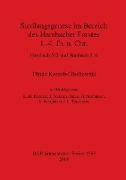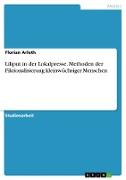Siedlungsgenese im Bereich des Hambacher Forstes 1.-4. Jh. n. Chr
BücherAngebote / Angebote:
This work investigates two civil rural settlements in the hinterland of the CCAA (Cologne) in the province of Germania inferior. Both places functioned as a roman villa rustica and they were excavated in the early 1980s before the surface mining operations began here. During the excavation thousands of finds (ceramic, glass, metal, stone and organic materials) and a number of features were discovered. The settlements were of different size, but their historical development and economical situations are comparable. The villas were founded in the middle of the first century AD. In the initial phase the inhabitants had both Romanised and native roots. They used only timber to build their houses and, later, occasionally stone foundations, framework and bricks. The villas reached their main period of influence from the 2nd to the early 3rd centuries AD. In the second half of the 3rd century the settlement was interrupted and the end of the villae rusticae can be dated to the 4th century AD. During this phase - when significant agricultural production stopped - both places were used for metal (probably iron) production. At this time the people lived once more in timber houses, which were located among the ruins of the Roman buildings. After the end of the 4th century the sites were abandoned. The archaeological evidence presented in this study, combined with the scientific analyses, affords a general reconstruction of a Roman cultural landscape in the first four centuries after Christ.
Folgt in ca. 10 Arbeitstagen




